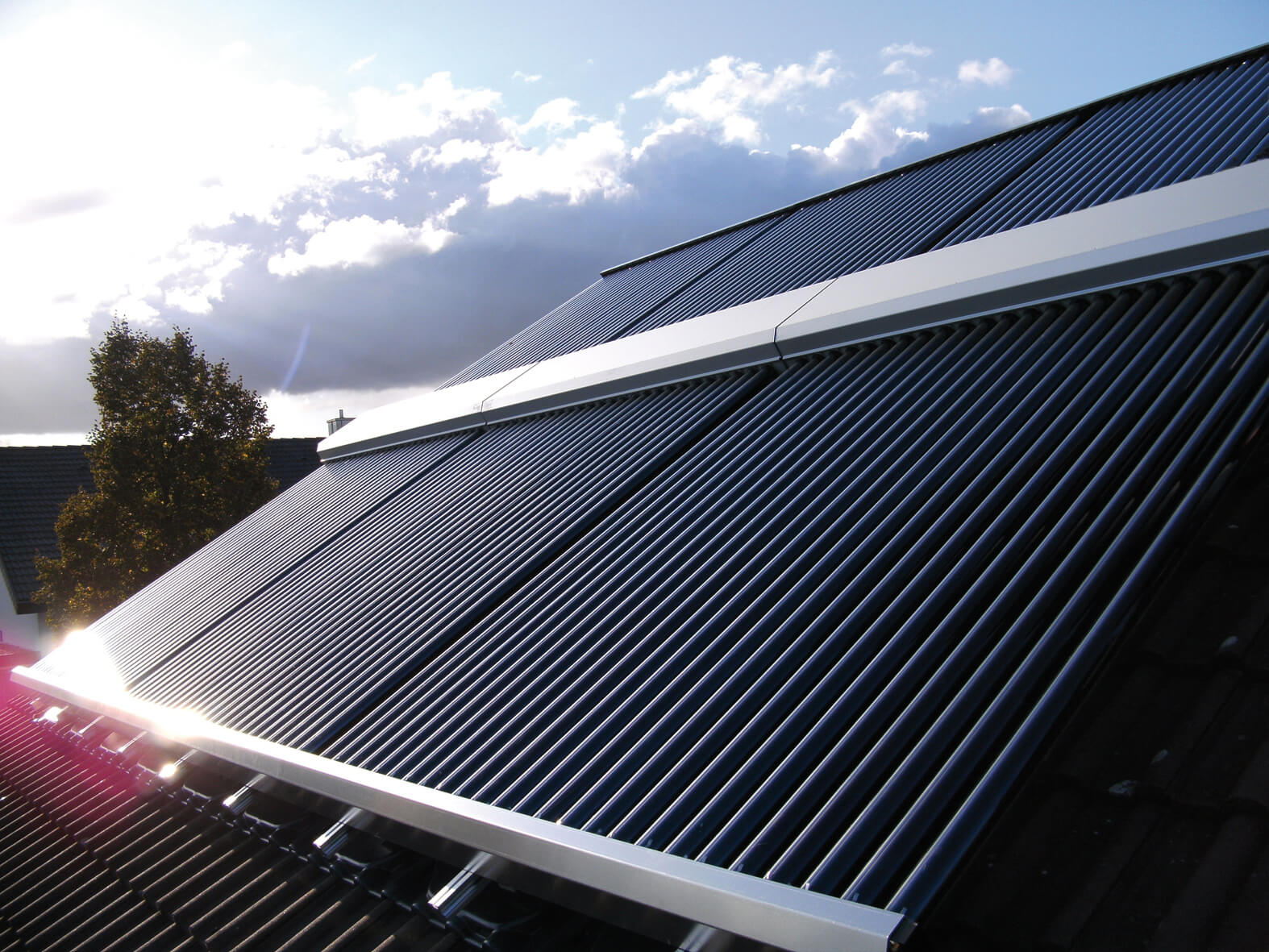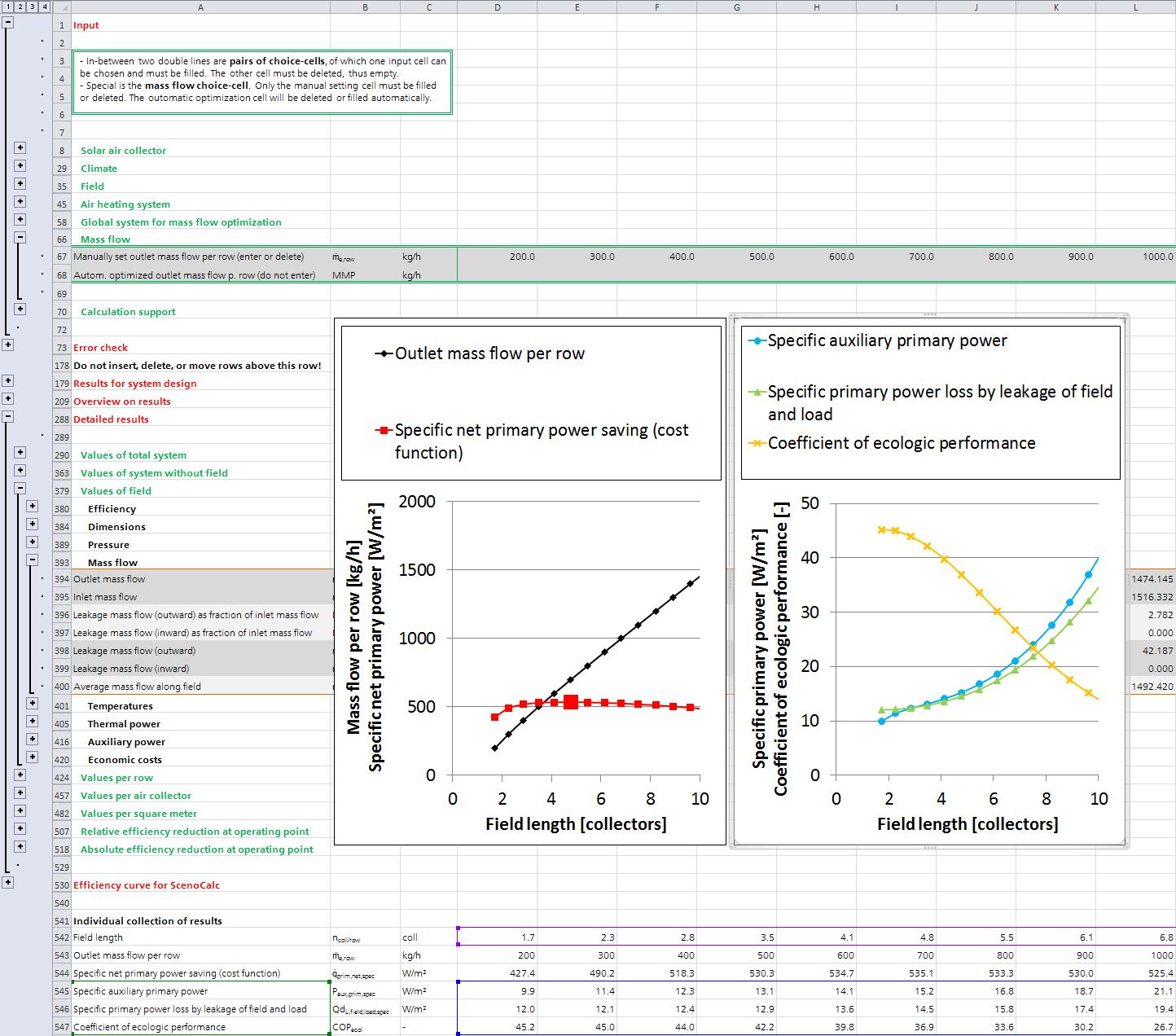Fraunhofer ISE Develops Freeware “Aircow“ to Calculate Solar Air Heating Collector Fields
Until a few years ago, solar air heating collector systems have received only limited attention on the market compared to fluid heating collector systems. Solar air heating collectors are more difficult to measure and to evaluate. This not only hinders the development of new products but also provides less transparency on existing products. In the meanwhile, a more detailed measurement method has been incorporated into the test procedure for solar thermal collectors (DIN EN ISO 9806). On this basis, Fraunhofer ISE created an MS Excel application in order to improve air collector evaluation and system planning. The calculated results serve to certify solar air collectors according to Solar KEYMARK, to design system layouts, to develop air collectors as well as to perform parameter variation studies.


Aircow (Solar Air Heating Collector Field Calculator and Optimizer for Instantaneous Working Points) is intended primarily for system planners, collector developers, scientists and test centers. System planers can determine the length and width of the collector fields while optimizing the volume flow. The results can be used to select a suitable ventilator for the entire system. Developers of air collectors can enter measurement or simulation data and compare results for steady-state operation. Scientists can carry out sensitivity analyses with Aircow in a relatively straightforward manner. In addition, parameters for a commonly used collector model can be attained from “Aircow” and then for example used in the freeware ScenoCalc (Solar Collector Energy Output Calculator) for annual simulations of the gross annual yield. Further, accredited test centers can implement the software for measuring and evaluating solar air collectors. At the beginning of 2017, the software became an integral part of the Solar KEYMARK certification, the quality label for solar collectors and a criterion for subsidy.
Aircow calculates either the collector field’s length and width or its temperature difference and power. In parallel with the calculations, the mass flow is optimized for efficient operation with respect to either economics or energy efficiency. For the computation, different boundary conditions can be set for the climate and the collector system. The Excel application requires no installation, and no software training is needed, if moderately familiar with the usage of Excel. The accompanying operating manual describes the input parameters and the results in detail. Measurement or simulation data, for example from test reports, can be copied straight into the application, which gives back the collector parameters of the model. The subsequently calculated results can then be easily post-processed, for example, visualized in graphs.
“The determination of the optimal mass flow requires a precise measurement procedure and a robust, system-related evaluation method to provide reliable results. This was the biggest challenge for us in developing the software,” says Christian Welz, Aircow developer at Fraunhofer ISE. Since the solar yield depends significantly on the mass flow, the efficiency assessment involves this additional dimension. The evaluation method developed takes not only the thermal output of the collector and the electrical demand of the ventilator into account, but also the collector leakage and the pressure drop of the rest of the solar system as well as energy prices and the primary energy factors. The application is based on characteristic models for air collectors with transparent covers, which are measured in closed circuits at varying inlet temperatures and mass flows. Since 2012, Fraunhofer ISE has been developing the models and publishing the results. One more publication and a dissertation on this topic are presently underway. Further details about Aircow as well as an option for download can be found under the following link: www.collectortest.com
To acquire measurement data for the program input, solar air heating collector tests based on DIN EN ISO 9806 can be carried out in the TestLab Solar Thermal Systems, a fully accredited laboratory for air collector measurements at Fraunhofer ISE. Coupled to the service offers and the freeware, the Department of Heating and Cooling Technology at Fraunhofer ISE offers R&D services for solar air heating collectors and complete systems.
The Testlab Solar Thermal Systems will be presenting its range of services offered and the freeware Aircow at the ISH in Frankfurt from March 14-18, 2017 at Fraunhofer ISE’s booth (Hall 10.2 / Booth B28).
Download
| Aircow_v3.00.xlsm | Format: *.xlsm (MS Excel 2010 or later with macros) Size: 876.7 kB Developed by: Christian Welz Download version 3.00 (2016-09-30) |
| Aircow_v3.00_Manual.pdf | Documentation / manual 53 pages, english Format: *.pdf Size: 3.6 MB |
| Version history: See last worksheet of modus "B. System Planning, Scientific Studies" within Aircow |
Last modified: